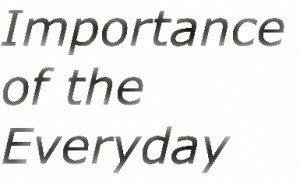OK, so that’s not entirely true but it caught your attention didn’t it?
While traditional long-duration, steady-state cardiovascular exercise such as running confers numerous health benefits, for most people it’s also a very inefficient (and potentially risky) way of losing excess body fat and getting in shape.
There’s nothing inherently wrong with running. In fact, there’s nothing inherently wrong with any form of exercise that makes people get up and move.
We encourage this! We applaud this! Movement is good.
We want people to move more and sit less.
We even called this out on a previous post about the most dangerous thing you do all day.
However, on the wrong feet and by the wrong person, running can put certain individuals at increased risk of repetitive strain and overuse injuries such as shin splints, plantar fasciitis or the oft-lamented IT-band syndrome. In our experience, many novice runners unfortunately haven’t prepared their bodies for the rigors of this type of exercise, and we regularly see the painful fallout at our clinic.

For this reason, we strongly believe in getting fit to run, not running to get fit.
Now if you LOVE running for hours on end, and you’ve trained your body to an appropriate base-level of fitness that can tolerate the constant pounding, then by all means, go out and run to your heart’s content.
You’ve earned it.
But if you HATE running, it bores you, and the only reason you’re doing it is because you heard that it’s was the best way of dropping extra pounds and improving your fitness, please keep reading.
What we’re about to tell you may just save you a few extra hours a week and help you drop a few extra pounds in the process (assuming that you’ve taken care of your nutrition!).
Results in less time, isn’t that what we all want?
Enter High Intensity Interval Training (HIIT)
Q. What is HIIT?
A. As the name suggests, HIIT is the term given to a form of cardiovascular system training where bouts (intervals) of very high intensity exercise are interspersed with periods of recovery. In true HIIT, the work segments should be completed near or at maximal intensity whereas the recovery bouts involve complete rest or are done at a much lower intensity.
Q. How does HIIT work?
A. Without getting too deep into the still controversial physiology behind HIIT, suffice to say that after the interval session is complete, this leads to an increase in a physiological event called Excess Post-Exercise Oxygen Consumption (EPOC) when compared to stead-state cardio. In EPOC, our bodies undergo numerous physiological processes designed to return us to the pre-exercise resting state. This process of returning to baseline requires energy, which is furnished by the body from its energy stores.
Q. How do I do a HIIT session?
A. There are many methods of completing a HIIT session, using various modalities (bike, swim, run, rower etc). The only limitation is your imagination! HIIT can be performed with a work to rest ratio of anywhere from 2:1 (e.g. Tabatas: 20 seconds ultra-intense activity:10 seconds rest) to 1:4 or greater and can be repeated for any number of cycles (typically 4-10) lasting for a total session timeline typically between 10-20 minutes.
The following is an example of a HIIT session that we’ve used with clients in the past, repeated 2-3 times a week:
- Warm up (5 minutes)
- 30 second all-out bike sprint
- 120 seconds slow recovery pedaling
- Repeat the cycle of 30 s: 120 s a total of four times (10 minutes)
- Warm down (5 minutes)
Q. Why would I want to do HIIT instead of steady-state cardio exercise such as running?
A. If you love running and have the time for it, keep running. However, as noted earlier, if you don’t enjoy it and could get similar or better results in less time, why would you do it?
- Minimum time investment: HIIT requires only a fraction of the time investment when compared to steady-state cardio but can often confer similar or better results for fat loss and conditioning (important note: HIIT is only one component of a well-rounded training and nutrition program).
- Decreased repetitive strain/overuse injury risk: The duration of HIIT sessions is only between 10-20 minutes, the repetitive stresses faced by the body when compared to an hour or more of running are far less. Think about it this way, in an hour long run, you are taking thousands of steps, each having it’s own impact through your body. In 10 minutes, the odds are that you’re not even coming close to the number of impacts.
- Avoid boredom: Many people get bored with hour long steady-state cardio sessions. The fast-paced, short duration set up of HIIT is often fun and engaging. And we all know if we enjoy something, we’re more likely to stick with it.
Q. This seems too good to be true. What’s the catch?
A. Yup, there’s always a catch. You don’t ever get something for nothing and the same holds true for HIIT.
- To get the true benefit of HIIT, the high intensity bouts have to be very high intensity. Real high intensity intervals hurt. They’re incredibly hard. They might make you feel like you are going to vomit. Your muscles will be extremely sore. And that’s why most people don’t do true intervals. They are uncomfortable. Incredibly so.
- HIIT may also put you at risk for injury. This of course depends on your starting fitness level and the type of training you’re doing (e.g. sprinting is higher risk than stationary bike) but is still a consideration when deciding whether HIIT is for you.
- Due to the intense nature, correctly performed HIIT should not be performed daily but 2-3 days per week at most.
In summary:
The two most important pieces of advice regarding any form of exercise, including steady-state cardio and HIIT are:
- Build up your fitness level gradually and progressively (e.g. if you’ve been a regular on your couch, don’t go all out into HIIT or even jogging, start gently and let your body adapt).
- Pick an activity that you enjoy and will actually do on a regular and consistent basis. If you love to run, go and run. If you love dancing, go out dancing. If you prefer something more intense and are crunched for time, consider interval training. Each has its benefits and risks. Find something that suits your lifestyle and do it.
Yours in movement,
Team Primal


(inside Peak Performance Golf)